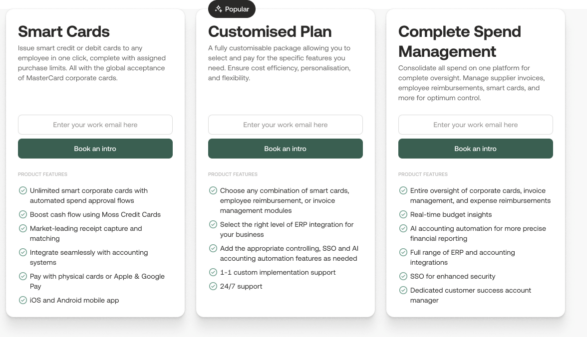With realistic financial goals and good spending habits, businesses are able to build sustainable partnerships, attract excellent employees and grow according to plan. But controlling spend and budgeting effectively are crucial. Easier said than done, you say? We agree! And we’re here to help—let’s explore what companies can do to improve their financial situation. As you’ll see, you can save money left and right if you know what to watch out for.
Control spend: definition

In order to control spend, we need to know what we’re actually dealing with. Effectively, controlling spend involves managing, overseeing and double checking outgoing cash. A company’s finance department has to make sure that company funds are spent on things that are crucial to keep the company afloat and moving towards targeted growth. This may involve smart investments, either in the short or long term.
That being said, it should be clear that controlling spend does not necessarily mean cutting costs. Often this would mean taking funds away from other departments that rely heavily on wider budgets to achieve their goals. Controlling budgets by analysing, assessing and redirecting costs is one of the most important responsibilities of finance teams.
Control spend vs control costs: what is the difference?

There is a significant difference between controlling spend and controlling costs, even though both sound very similar. Controlling costs usually means actively reducing payments to save money. On the other hand, controlling spend is ultimately not related to lowering expenditure. Instead it refers to checking the outgoings of the company.
Where spendings like rent, payroll, and utilities are typically rather consistent, several payments are harder to predict and budget. These include:
- Business travel
- Subscriptions for necessary tools
- Procurement
- Online payments
- Cultivating supplier relations
- Spontaneous spendings
These areas commonly have highly variable costs that are much more difficult to manage. That’s why it is critical to control spend in these areas. They need to be properly assessed, approved and set in compliance with budget plans.
On top of unnecessary costs, another factor commonly slows down business. In accounting, messy bookkeeping with no clear record of who has spent what can be a real nightmare. It prolongs processes and can get companies in trouble with HMRC if audits reveal discrepancies.
But who should be in charge of overseeing a company’s finances? Many established businesses have a financial controller or hire external help to control spend. But, without the support of managers and employees outside of the finance department, it’s hard to get this done. This is especially true if a company is trying to outgrow their start-up phase.
Manage spending properly: oversight is key

Visibility is essential when you want to manage spending effectively. Many companies struggle to get a firm understanding of their outgoing funds month by month—simply because they do not have the means to track their money properly. Discretionary spending is especially hard to forecast, so we highly recommend keeping track of these expenses on top of the usual operational costs.
But nowadays we also have to keep in mind that energy costs are an unpredictable expense. Companies that heavily rely on gas for production, or have a high electricity demand, need to be aware that every pound counts to stay afloat and solvent in this economy. When money is tight, we need to be aware of how much we can do to make well-informed business decisions. There is no way around spending control and good cash flow management.
Problems resulting from insufficient spend control
Future budget plans usually reflect the amount of money that was needed within a quarter or year at the time they were made. When there’s no clear overview of what was actually spent before, it’s nearly impossible to realistically predict what is needed in the upcoming months. When CFOs struggle with a lack of available data, they’re more likely to make poor decisions that can negatively impact the business. This may include cutting costs when funds are needed to achieve key goals, support team members or take risks.
Poor planning can lead to plenty of problems. Here’s a little overview of what can happen if you don’t take the matter or planning seriously:
- Teams overspending their budgets
- Slowing or even stopping company growth
- Demotivated staff
- Significantly more work for the finance department
- Tax issues and even accusations of fraud
Even though every business should trust their employees, it’s worth noting that there’s always a significant possibility that expense reports will contain errors. Most of them don’t stem from malintent. However, when there is a chance to make a little extra money from the company, some employees may be tempted to take it.
Monthly, quarterly or annual settlement is always a busy time for finance teams. They have to make sure that all incoming and outgoing cash is documented well. That also means asking employees for receipts from their business-related expenses, as well as asking managers for approvals. Finding out which expenses belong to which team and budget is always an annoying process. Incomplete data slows it down, increases the risk of errors, and can cause real issues for a business on a higher level.
The solution: company spending the smart way

Controlling company spending in this day and age doesn’t have to involve a lot of paperwork. Many processes that used to be time-consuming manual tasks with a high risk of error can be automated with ease. Therefore, we highly recommend streamlining documentation as much as possible by working with real-time spend data.
Credit cards with no limits or expense control can cause problems. Theft, loss, or data breach online can easily lead to credit card fraud. To protect against these risks, many businesses now opt to use safer virtual or physical cards with spending limits for one-time or employee-related use. They save team members and accounting plenty of time. When all expenses are paid by card instead of out-of-pocket money, there’s no need for tedious expense reports.
Pre-approval saves time
Many companies can manage spending better by using pre-approval processes. They save managers a lot of time as employees can work within a certain range of approved criteria on an app or platform, without asking for permission when making a purchase or using a service. Team members can work more intuitively instead of having to remember specific rules and regulations.
This helps control spend and boost team productivity when working with specific products and subscriptions. Smart spend management can also notify managers when approval is needed immediately. In turn, they can approve spending at any time, anywhere—without the outdated approval forms and email trails.
Well organised spend management helps the finance department spot unusual expenses. High bills, unapproved spenders or suppliers, and incomplete data will be flagged for further inspection, and fraud can be detected much more quickly.
| Compare your company’s spend with industry averages: Try our comparison calculator to see how your costs compare to the industry average. >>Benchmark your SaaS spending now!<< |
How to budget effectively with Moss

To control spend, visibility is key. Moss helps businesses streamline their spend management with highly customisable software for every need. Our solution can bundle all business accounts together in one place, giving your finance team, CEO and managers access to insightful real-time data on cash flow. No need for time-consuming spreadsheets, and no more manual errors.
Users can save time and money by automating repetitive tasks and speeding up settlements. Managers and accountants can also profit from simplified approval processes for card payments, expenses, and invoices. And, thanks to a smart interface, data can be exported to Xero right away.
Physical and virtual cards from Moss help our customers manage spend and budget more effectively. Every employee can receive a card to pay for individual business expenses. These cards can be limited to individual team members, specific budgets or set for one-time use. This makes them an unrivalled payment option for business travel online payments. With Moss, it’s easy to track cash flow. You won’t have to guess budgets, and you can make well-informed business decisions with real spend data straight from your Moss account.
FAQs
To control spending, you should keep track of your expenses—from typical costs like rent and payroll, to discretionary costs and expenses from business travel, subscriptions for necessary tools, procurement, online payments, cultivating supplier relations and other spontaneous spending.
A spend management process refers to the way you handle your business spending. It’s a good idea to rely on automated processes fed with real-time data because you’ll get immediate insights on liquidity, team budgets, and suspicious payments.
Visibility is key, so every business should make sure that they have full access to data on incoming and outgoing money. By controlling the cash flow, managers and accountants can ease approval and reimbursement processes, spot discrepancies and avoid typical expense-related errors.
When spend control is neglected, financial planning suffers too. Teams might have to overspend their budgets and partners, investors, and employees might be scared off by poor business decisions. This can negatively affect the company’s growth and even lead to tax issues.
The use of corporate cards for business-related expenses is a great way to track and manage costs. If every employee has access to their own individual card with a budget or spend restrictions, your business’s funds will be much safer. You’ll also have much less paperwork and manual approvals to deal with.







